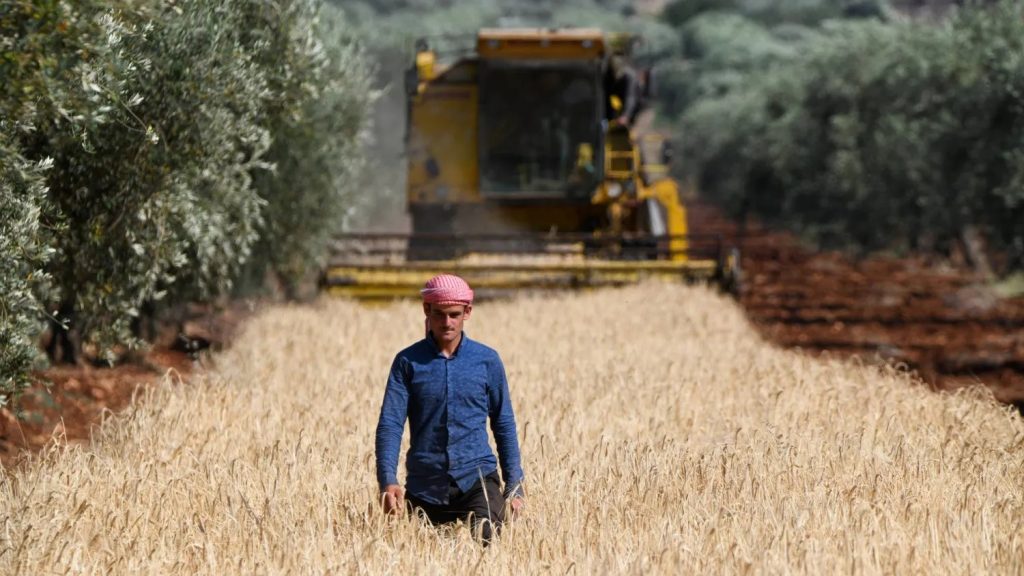Syria is confronting a potentially historic food crisis after the worst drought in 36 years drove wheat production down by roughly 40%, heightening pressure on a cash-strapped government that has struggled to secure large-scale grain purchases.
The U.N. World Food Programme (WFP) told Reuters that about three million Syrians could face severe hunger, without specifying a timeframe, and that more than half of the country’s roughly 25.6 million people are currently food insecure. In June, the Food and Agriculture Organization (FAO) estimated a domestic wheat shortfall of about 2.73 million tonnes this year — enough to feed some 16 million people for a year.
The shortfall compounds a difficult political and economic recovery: Reuters noted the challenge facing the government of Ahmed al-Sharaa, which is trying to rebuild the country after a 14-year war that the report said ended with the overthrow of ousted President Bashar al-Assad in December.
Wheat — Syria’s most important crop and the cornerstone of the state-subsidized bread program — is in steep decline. FAO data show annual wheat consumption at about four million tonnes while domestic production is expected to fall to roughly 1.2 million tonnes this year, a decrease of about 40% from last year. The FAO reported that only 40% of agricultural land was planted this season and that drought has destroyed large areas in key producing provinces such as Hasakah, Aleppo and Homs.
The new government has purchased only 373,500 tonnes of wheat from local farmers this season — about half of last year’s purchases, an anonymous government official told Reuters. Officials say the country needs to import about 2.55 million tonnes this year but have not announced any major import deals, instead relying on smaller shipments of roughly 200,000 tonnes through direct contracts with local importers, two industry sources said. The Ministry of Information did not respond to Reuters’ request for comment.
Tony Attal, the FAO representative in Syria, warned that half the population is threatened by drought, particularly with regard to bread availability, and noted that emergency assistance has been limited. Syria has received around 220,000 tonnes of wheat from Iraq and 500 tonnes of flour from Ukraine, FAO figures show.
Farmers on the ground described devastating losses. Nazih al-Tarsha from Homs said this season was the worst his family has experienced since they began farming in 1960. Abbas Othman in Hasakah reported harvesting nothing from six hectares he planted. Tarsha said he could normally sell about 25 tonnes from six hectares but this year managed only eight tonnes, much of which was unfit for human consumption and fed to livestock. The government has encouraged farmers to sell remaining crops to state buyers at $450 per tonne — roughly $200 above market prices.
Before the war, Syria produced up to four million tonnes of wheat and exported about one million tonnes. In a major policy shift in May, U.S. President Donald Trump announced the lifting of sanctions on Syria, a move intended to ease economic recovery. Despite that, the U.S. Department of Agriculture estimates Syria will need to import a record 2.15 million tonnes of wheat in the 2025-26 season — a 53% rise from last year.
However, Syria’s General Establishment for Cereal Processing and Trade has not announced a new procurement strategy and did not respond to Reuters’ questions on the matter. Two sources familiar with the matter said that wheat imports are facing payment delays due to financial difficulties, despite the lifting of sanctions.
Source: Reuters (edited by Al-Manar English Website)




